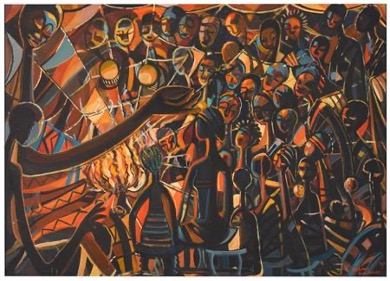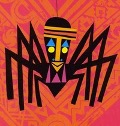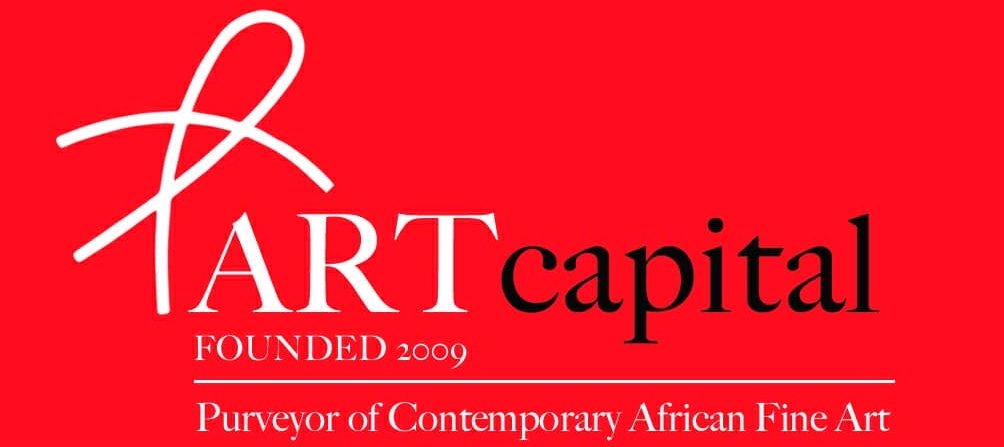By Nii B. Andrews.
The painting ANANSESEM by the Ghanaian master, Kobina Bucknor, is an excellent example of his aesthetic philosophy and practice.
Bucknor emphasized stylistic representation over formal rules; in the process he expanded the boundaries set by parameters such as realistic figuration and perspective.
An African perspective suffused his work and in ANANSESEM the faces of subjects are classic carved African masks with elongated torsos and limbs.
Bucknor himself described this as the “sculptural idiom”; he was translating Africa’s superlative sculptural language onto canvas.
The effect is an otherworldly feeling – perhaps a mystical air that evokes the spiritual element inherent in being human.
ANANSESEM with its campfire and figures provides an empyreal tapestery – a communal gathering around a campfire under the night sky during which folk tales are shared to the sound of music, clapping, drums, call and response.
A significant feature of Akan oral literature is the popularity of the narratives about the spider Kweku Ananse. Indeed, Ananse lends his name to the oral narrative genre, known among the Akans as anansesem, aka Ananse stories.
He is a well-known figure to both the old and the young.

The stories feature Kweku Ananse – a cunning and conniving spider who can today be considered a trope for …… well, never mind; it is what it is!
The Ghanaian scholar, Kwawisi Tekpetey explains:
“Ananse is revealed as an incarnation of the id with little or frequently no intervention of the superego.
He is lawless, asocial, and amoral.
One systematically finds him engaged in activities directed at gratifying his instincts for pleasure without regard for social conventions, legal ethics, or moral restraints.”
Bucknor signifies the Ananse stories called collectively as ANANSESEM by including in the painting a spider’s web as a connection between the storyteller and his captive audience.

The spider’s web, a danger or trap for other smaller insects, also reminds us that Kweku Ananse’s literary function in the oral educational system appears to be an attempt to expose the danger that he represents in society.
Does this also foretell some of the dangers of the world wide web – and the hegemony of the latest “Bond villains” – especially with respect to those most vulnerable to the platform’s manipulative and exploitative features?
Bucknor in his paintings showed that he “believed in the synthesis of ancient African culture and folklore with modern painting methods to create works that hold African traditions in reverence as well as respond to contemporary society”.
As a final parting thought about our contemporary society, can we realistically, conclude that, “Ananse stories are the result of resistance but more importantly, they reveal a nontraditional subversion that guarantees hope in a hopeless system.
In this sense, does Ananse accept fatalism as a cognitive structure of his identity; since he lives in a fatalistic society?”
Perhaps Ananse embodies the nuance or if you prefer, guile that must guide the chaotic reorganization of the double-moral world he lives in. Therefore, in those situations that imply confrontation, Ananse is able to defeat his enemies using intelligence rather than force.
